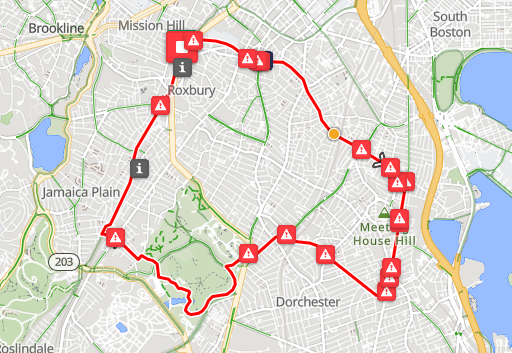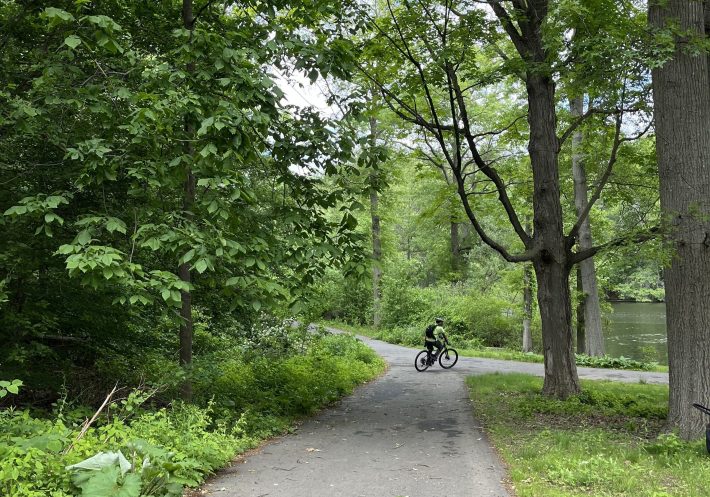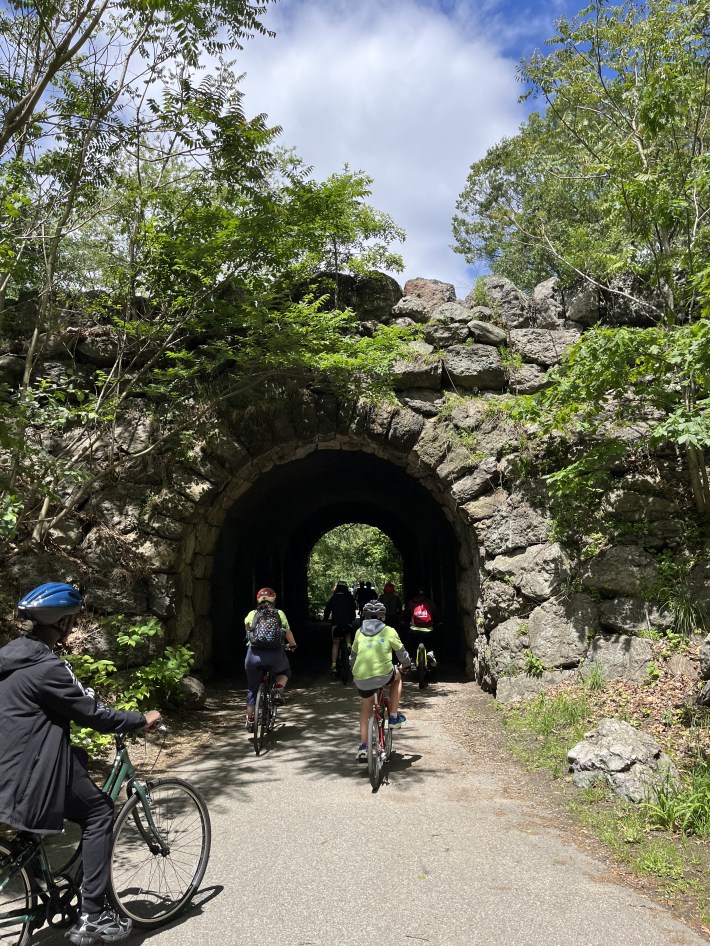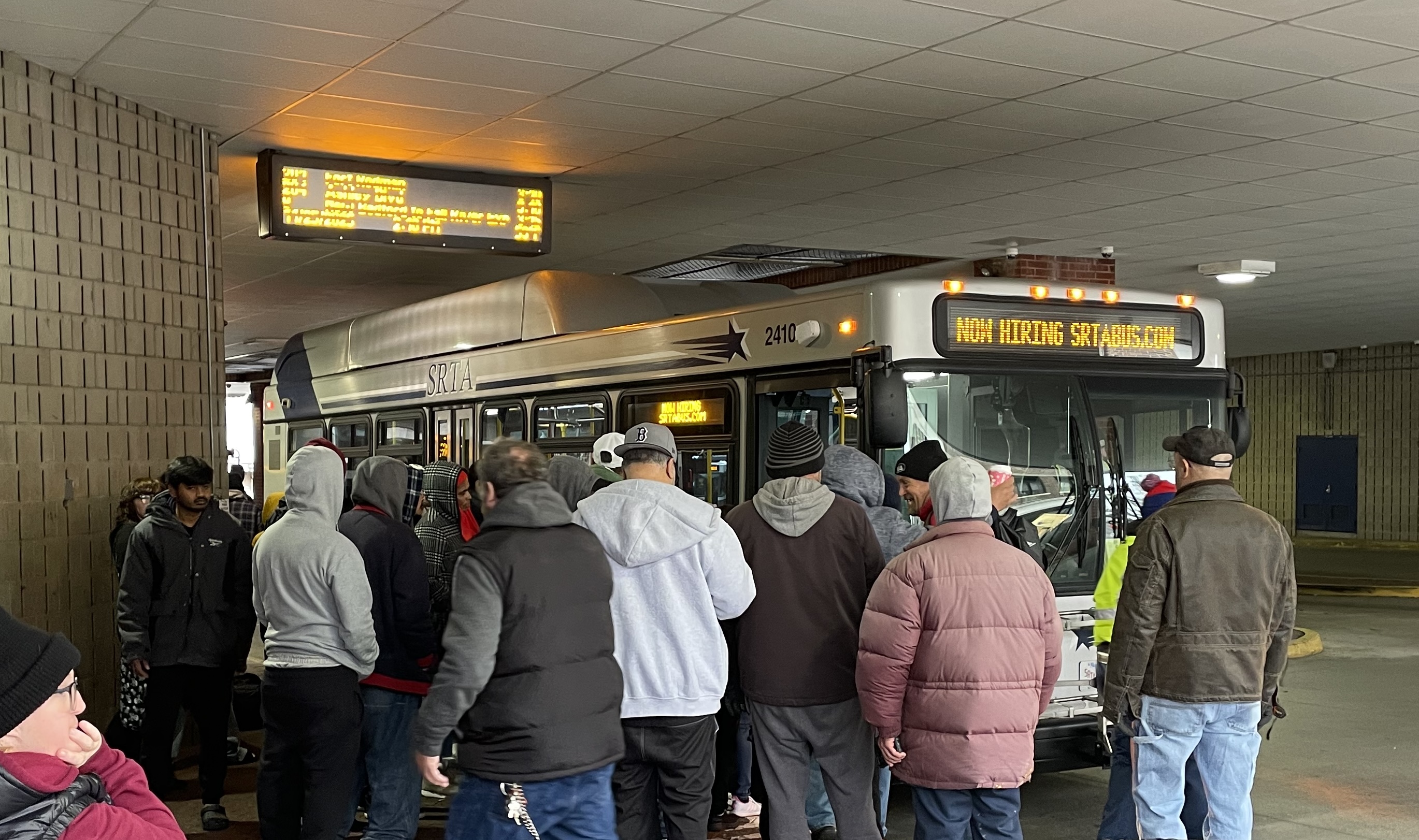While dozens of young people, many of them young people of color, celebrated each others’ accomplishments at the Youth Bike Summit earlier this month, there was also a heaviness at the weekend’s event regarding the growing presence and threat of anti-immigrant policing in communities across the country.
From the militant response to the ongoing protests in Los Angeles, the recent detainments of Rumeysa Ozturk and Milford high schooler Marcelo Gomes da Silva, and raids from Martha’s Vineyard to Worcester, ICE is in our communities, and our government is increasingly at odds with our liberty.
Out of fear of ICE raids and arrests, cultural celebrations like Cinco de Mayo have been canceled while those who don’t identify with the culture or community – or worse yet, see the people behind the culture as caricatures, sexual objects, sources of labor, or threats rather than full human beings – take to the streets to participate in bar crawls devoid of the spirit of the day.
Caregivers are keeping students home from school out of fear that their student won’t return, or that they themselves will get detained. People are not showing up to work, or doing so with an abundance of precaution that can have lasting negative effects on their physical and mental health.
Masked police are tearing families apart. Infringing on our constitutional rights. Brutalizing and traumatizing our neighbors. And abusing power to sow the seeds of chaos through state-sanctioned violence.
People are living in fear of what another day in this version of America will bring, and wondering if they can go outside and live their day-to-day routine without being harassed and mercilessly ripped from their lives.
The students who came to the Youth Bike Summit from the El Puente and ECO Youth groups are from Latino communities, one of the hardest hit in this administration’s inhumane immigration policy escalation.
While talking to some of the student presenters, I learned that some of El Puente’s youth members stayed home in New York out of fear of crossing state lines. Later in the day, the ECO Youth from Chelsea reflected on the fear they were seeing and feeling in their community as a response to what has been going on.
When children are put through these experiences of feeling ostracized, lose the stability of their family structure, are unable to participate in a bike ride or a weekend of learning that would support their personal, academic, and professional growth, what are we losing?
This is the antithesis of justice, and mocks the concept of “freedom” that is allegedly a key pillar of this country’s identity.
Amid all the conversations I have been having recently about urban planning, biking, and the freedom to move, I couldn’t help but wonder: what does a “public street” mean when some people can’t use it without risk? Or when others can use the very same infrastructure to strip people of their freedoms? And can freedom really exist on stolen land?
I think about the young people from New York City, unable to come on El Puente’s ride. I think about George Floyd, murdered on city streets of Minneapolis. I think about these abductions taking place in broad daylight in public places, stopping people in their tracks to detain them. I think about protesters taking to the streets, standing opposite to militarized police forces just trying to speak truth to power, protect one another, and change the focus of a news cycle driven by money and misinformation.
What we’re witnessing is an example of what transportation research Charles T. Brown has coined “arrested mobility”, or the systemic restriction of movement for Black, Brown, and low-income people through laws, policing, disinvestment, and cultural norms.
Physical mobility is directly related to social mobility, and it is hard to stomach the short and long-term impacts on marginalized and vulnerable people who have historically been facing this uphill battle to the equity they are owed when this pipeline is cut off.
"People are scared to go outside right now. Not just because of cars, but because of raids.”
On Sunday, June 1, the rain cleared and dozens of Youth Bike Summit participants brought all of our bags to the Roxbury Community College parking lot, where we found rows upon rows of bikes and helmets organized by size. Our main objective for the morning? To hit a group 10-mile ride through the southern half of the city.

We took a group photo in front of the “History of Fort Hill, Pt.2” mural in the parking lot which depicts Roxbury's history – including a hilly scene of a church and homes, an apple orchard, industrial buildings, a neighborhood, the Orange Line, and Roxbury Community College students at desks.
The Boston skyline sits behind the Orange Line, while Edward "Pop" Cooper, a Roxbury activist, sits in the front left, smiling and holding an apple. This mural served as a fitting backdrop for the summit, which carried themes of youth, education, community, and transportation throughout.

On our ride, we passed through urban corridors like Blue Hill Ave and MLK Boulevard, parks like Franklin Park and the Southwest Corridor Park, and residential neighborhoods like Upham’s Corner. We rode shoulder to shoulder in the bike caravan, with the team of volunteers ensuring safe turns, crossings, and stops along traffic-calmed stretches.
I was apprehensive about riding with one hand and getting photos and videos with the other surrounded by so many people, but once we got rolling I was able to find a groove and capture the palpable joy on the ride.

The group cared for one another. Where one person fell, a group was there to help them back up. When one teen standing by threw a rock in the direction of the caravan, a volunteer hopped off her bike to hold him accountable.
The experience was embedded in the community. We shared the road with buses, cars, pedestrians, and the occasional squirrel. People honked, waved, and cheered as we biked on. Our ride passed some people attending a first communion and others golfing at the William J. Devine Golf Course in Franklin Park.
The ride highlighted the importance of youth leadership, bike safety, community resilience, mobility, youth empowerment, inclusive public infrastructure, and civic engagement, all while showcasing and experiencing firsthand Boston’s racial, cultural, transportation, and planning histories.
To me, the ride was also an exercise in joy as resistance and community accountability, tools that can be taken out of this context and applied to our response to this political moment.



I am always grateful to live in an area where political leaders support their community against being othered and mistreated, and want to amplify the local resources available at our disposal, and implore you to share any others in the comments below.
Being undocumented is not a crime. People are not "illegal." Welcoming, embracing, and celebrating this country's people and the diversity they bring is what makes it “great”, not shame, fear, and chaos driven by racism and xenophobia.
My life would not exist as it currently does without immigration and the freedom to move, and the sacrifices of those before me and around me to preserve their cultures and seek out opportunity are ones I do not take lightly.
When we come together to stand up and protect one another as we stare down dark times, whether through protests, or mutual aid, or in the joy of a group bike ride through our neighborhoods, we will prove time and time again that we are stronger than any authoritarian power grab.
Things might feel futile right now, but the opportunity to kick some of the representatives in Congress who are rubber stamping this terror to the curb is already underway with campaigns for the midterm elections in 2026 gearing up.
And on our local level, we can advocate for smart and inclusive planning to embed our streets and communities with justice, rather than uphold the status quo.
If it wasn’t clear before, this weekend continued to affirm that our country – down to our streets – is in need of great leaders. Leaders who act, who think big, who don’t leave anyone behind – young leaders.






